15 Proven Strategies to Drop 2 Pounds a Week with Minimal Effort

Weight loss is not easy—for the most part, it requires discipline and can be a monotonous process, but once you see results, it's much easier to stay motivated. "Over the long term, it's smart to aim for losing 1 to 2 pounds (0.5 to 1 kilogram) a week," says the Mayo Clinic. "Generally, to lose 1 to 2 pounds a week, you need to burn 500 to 1,000 calories more than you consume each day, through a lower calorie diet and regular physical activity." Here are 15 proven strategies to lose 2 pounds a week without feeling overwhelmed.
Calorie Deficit
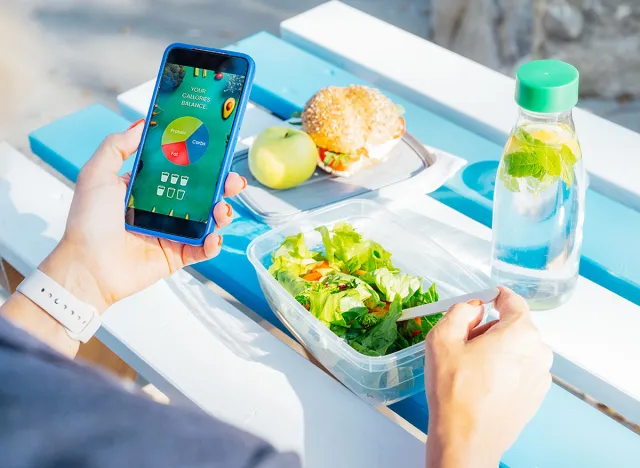
Weight loss essentially comes down to calories in vs calories out. Make sure you are burning off more than you're taking in for effective, steady weight loss. Try to make realistic long-term goals instead of overly-drastic changes.
Intermittent Fasting

Intermittent fasting is a practice where you restrict your eating to a certain time period a day. Many find it a useful tool for weight loss, as it essentially prevents grazing or snacking all day. Some people find it easier to stick to early eating windows, while others prefer to save their calories for late afternoon and evening.
Lots of Walking

Walking is an excellent, low-stress way of burning calories. Walking can be incorporated into your lifestyle, whether it's taking the stairs instead of the elevator or parking as far away from the store entrance as possible. All those steps add up!
No Drinking

Drinking can undermine weight loss in many ways. People tend to eat more when they're drinking, usually unhealthy snacks. Save the occasional drink for when you've hit your goal.
Watch the Sugar
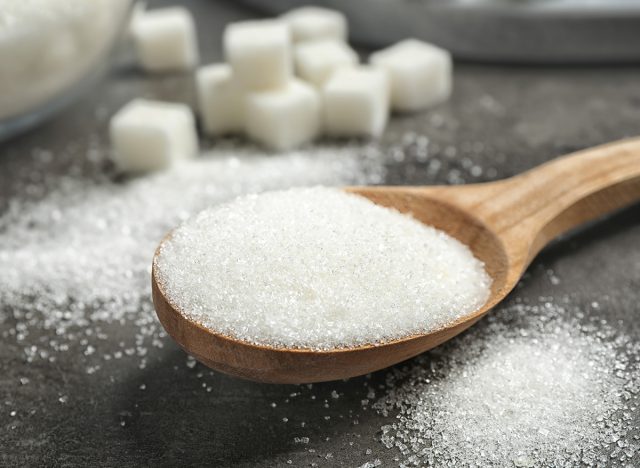
Sugar is essentially an empty calorie—it has no nutritional value and can have negative health impacts. Fruit doesn't count, as it's packed full of fiber and antioxidants. One great choice to satisfy your sweet tooth is strawberries, which are low in calories and taste delicious.
No Junk Food

Junk food should be avoided at the best of times but especially when you're trying to lose weight. One fast-food meal can easily end up containing a day's worth of calories, and it won't leave you feeling satiated as those same calories would in a whole-food diet.
More Protein
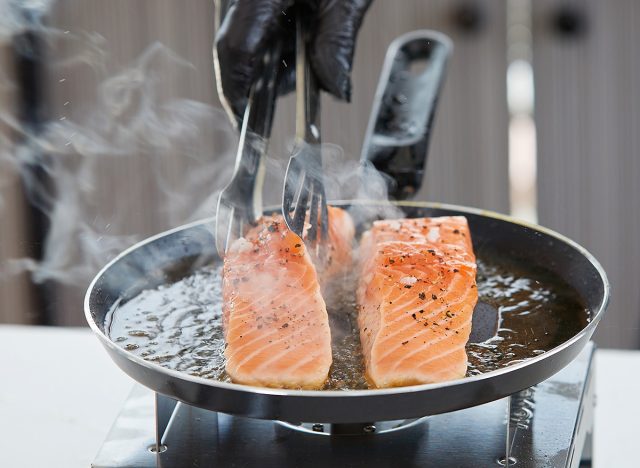
Protein helps keep you satiated—try including it in every meal and snack. Protein is also important for building muscle. Muscle burns fat even when you're at rest!
RELATED: 15 Quick Ways to Lose Body Fat Percentage in a Week
Drink Your Water

Don't forget the humble glass of water while trying to lose weight. No, you don't need to cart a giant thermos of water around with you everywhere. Just drink enough to stay hydrated and remember, the water from tea and coffee and foods such a watermelon all add up, too.
Weight Training
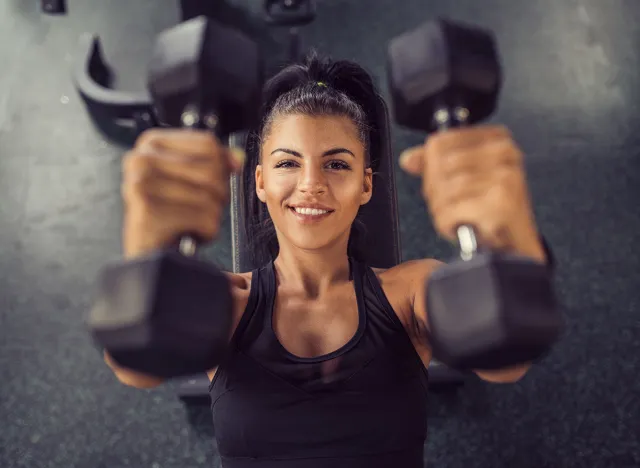
Weight training will not only help improve your mood, it supports muscle growth and bone health. Weight loss can result in losing muscle as well as fat, but strength training can help you achieve weight loss in a healthy way. Another benefit is your metabolism will get a boost.
Cardio Queens
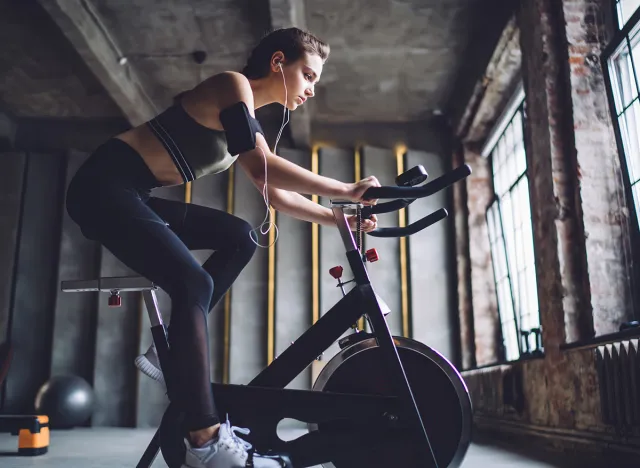
Cardio is a great way to improve your health while torching calories. Running, elliptical, stationary bike and HIIT workouts are all great for getting fit and losing weight.
RELATED: I Lost 20 Pounds with the 12-3-30 "Advanced" Walking Workout
Active Hobbies

Any hobby that gets you off the couch and moving, especially if it's with friends, is ideal. Tennis, volleyball, hiking, horseback riding… There are so many fun things to choose from. The more fun you have, the more likely you are to stick with it, which means near-effortless weight loss.
Healthy Fats
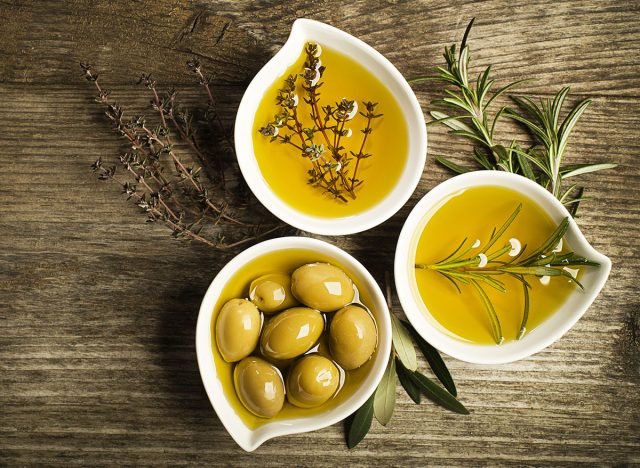
Don't avoid healthy fats! They are very important for satiety and, therefore, weight loss. Oily fish, avocado, and olive oil are all good examples of healthy fats that are so good for you. Weight loss is just a happy side effect.
Plenty of Fiber

Eating fiber will help keep you full, which means you're less likely to snack. "Fiber-rich foods include fruits, vegetables, and whole grains," says Obesity Medicine Association. "Eating foods containing fiber in their natural form provides fullness or satiety and leads to lower consumption of calories."
No Ultra-Processed Foods
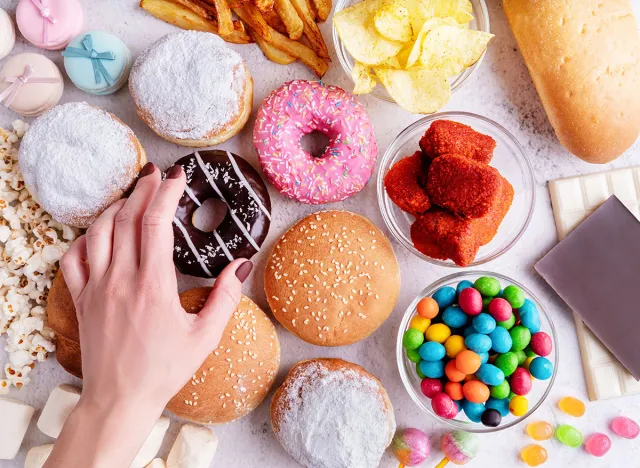
Avoid ultra-processed foods, as they can quickly undermine your weight loss. "Handy tip – if foods have more than 2-4 ingredients with unrecognizable names, these are processed foods," says the Obesity Medicine Association. "Foods that you recognize that are straight from nature and unaltered, or minimally altered, are considered whole foods and much more favorable for health benefits and maximize the benefits of fiber for weight loss/preventing weight gain."
RELATED: 20 Abdominal Fat-Blasting Tips for a Flatter Stomach in 60 Days
Talk to a Doctor

Getting help from a medical health professional can rule out any conditions that might be slowing down or preventing weight loss. Always talk to a healthcare provider before embarking on any drastic or restrictive diets.
💪🔥Body Booster: Lifting weights helps with fat-burning even when you're at rest. And if you enjoyed this article, take advantage of these 15 Quick Ways to Lose Body Fat Percentage in a Week.




